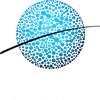Objectives
- To improve forecast skill and understanding on the subseasonal to seasonal timescale with special emphasis on high-impact weather events
- To promote the initiative’s uptake by operational centres and exploitation by the applications community
- To capitalize on the expertise of the weather and climate research communities to address issues of importance to the Global Framework for Climate Services
Background
- The WMO Commission of Atmospheric Sciences (CAS) requested at its 15th session (Nov 2009) that WCRP, WWRP and THORPEX set up an appropriate collaborative structure for subseasonal prediction.
- A WCRP/WWRP/THORPEX workshop was held at Exeter in Dec 2010 which recommended formation of a Planning Group to write an implementation plan for an S2S project under WCRP-WWRP-THORPEX sponsorship
- The implementation plan was written in 2012, was endorsed by the WWRP and WCRP JSCs, and creation of the Subseasonal to seasonal prediction project was approved by the WMO Executive Council, which also approved the creation of a project office and a trust fund for sub-seasonal to seasonal prediction.
- Term of reference were drafted and the first 5-year phase of the project began in Nov 2013.
- A report on the first 5 years and a proposal for a Phase II of S2S were published in 2018, including a gap analysis. [S2S Phase II Document]
- Phase II of S2S began in January 2019 and will conclude in December 2023.


 apcc21.org
apcc21.org

